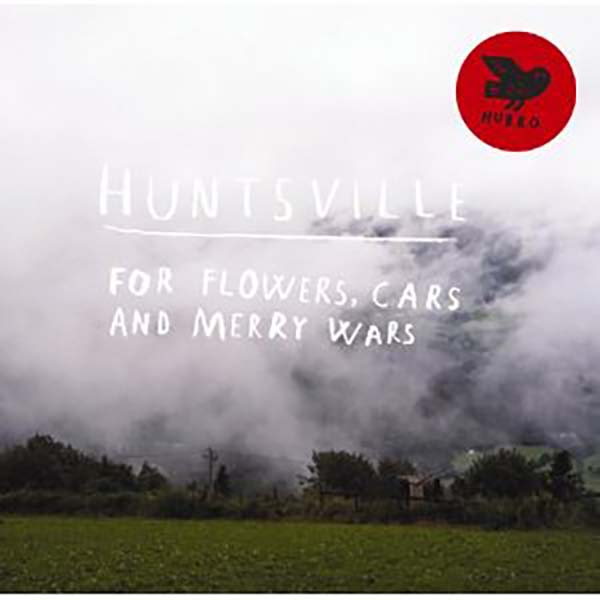
by Tim Owen
June 22, 2011
/ ALBUM
"For Flowers" delivers fully on the promise of the band's earlier works.
Huntsville
“For Flowers, Cars and Merry Wars”
Hubro (LP+CD)
Since I saw Huntsville live back in October 2009, then promoting their expansive second album, I’ve wondered whether they would take their psychedelic Americana, which they could comfortably loop through apparently endless variations, in a fresh direction. It seemed essential that they should. Their then-new album, the two-CD set “Eco, Arches & Eras” (Rune Grammofon, 2008) had already expanded nicely on the template set by their 2006 début, “For the Middle Class” (also Rune Grammofon), but the sound they’d developed, though compelling, promised to lead nowhere except back on itself. On both early albums the Norwegian trio blend long-form electro-acoustic improvisations with jazz and an original twist of country. The musical advance on “Eco, Arches & Eras” resulted partly from their extensive use of a Drone Commander. This box of sonic tricks incorporates manually-tuned oscillators, and emits a pulse waveform that can be filtered to produce rhythmic patterns. A more basic tabla machine was also extensively deployed. While the Drone Commander enriched the trio’s basic instrumental blend, it was the sadly overused, essentially crappy tabla machine that came to dominate the group’s sound. They seemed reluctant to turn the damn thing off. Thankfully, however, the otherwise rich blend of ingredients in the Huntsville sound meant they remained a compelling proposition, merging elements of early Tortoise and Hex-era Earth with a Steve Reich influence.
Now signed to a new label, Hubro, Huntsville’s new album “For Flowers, Cars and Merry Wars” is released in a limited edition vinyl-only edition, which comes bundled with a CD copy. It will be a pity if this format limits the audience for the album, because “For Flowers” delivers fully on the promise of the band’s earlier works. The tabla machine has thankfully been relegated, and the trio’s more basic rhythmic exoskeleton has been honed away for a more mature, abrasive and muscular take on the augmented power drone aesthetic. There are no instrumental credits on the albums, but in concert Iyar Grydeland plays guitars and banjo, Tonny Kluften basses, bass pedals and rhythm box, and Ingar Zach percussion, shruti box, tabla machine, and drone commander.
The eighteen-minute long title track, “For Flowers, Cars and Merry Wars” begins as a song, with Hanne Hukkelberg’s vocal cameo echoing, in its flatness, her early work with doom metal band Funeral. (The lyrics are by Jonas Howden Sj?vaag, who was a drummer with Ignore, another of Hukkelberg’s past bands. If you know what they say, let us know.) The song is underpinned by a repeatedly stabbing rhythm that is initially sustained but ultimately undermined by shifting tones and intertwined drones which kaleidoscopically surge to the foreground at the halfway mark, before being tamped down by a locomotive shuffle rhythm and chiming guitar. The track ultimately resolves in a haze of failing electronic sound, gentle guitar dissonance, and clean electronic chimes. Zach’s tabla machine makes its sole appearance - this time out, played with new found sensitivity - on the following track, a lovely 26-second long interlude titled “For the Working Class”.
“Ear/Eye Connector” sustains an agitated rotary rhythm for the first eight of its twelve and a half minutes, before this ebbs away to leave just its underlying, pulsing bass drones exposed. These pulses then get stronger, and act to draw miscellaneous skeins of electric current into a single throbbing unity. The final minutes settle into a low machine hum with steadily alternating bass currents punching through like heartbeats. The track has a vital, animate pulse, and there’s something affecting about the moment when it finally flatlines. The final five minute long “Star Spangled Pillow” foregrounds reverberant post-rock guitar licks atop an uneven stratum of bass pulse, while an electronic pulsation is layered with swarming effects. This layering peaks in siren intensity before the track dies away on a guitar loop dappled with sparse percussion.
blog comments powered by Disqus